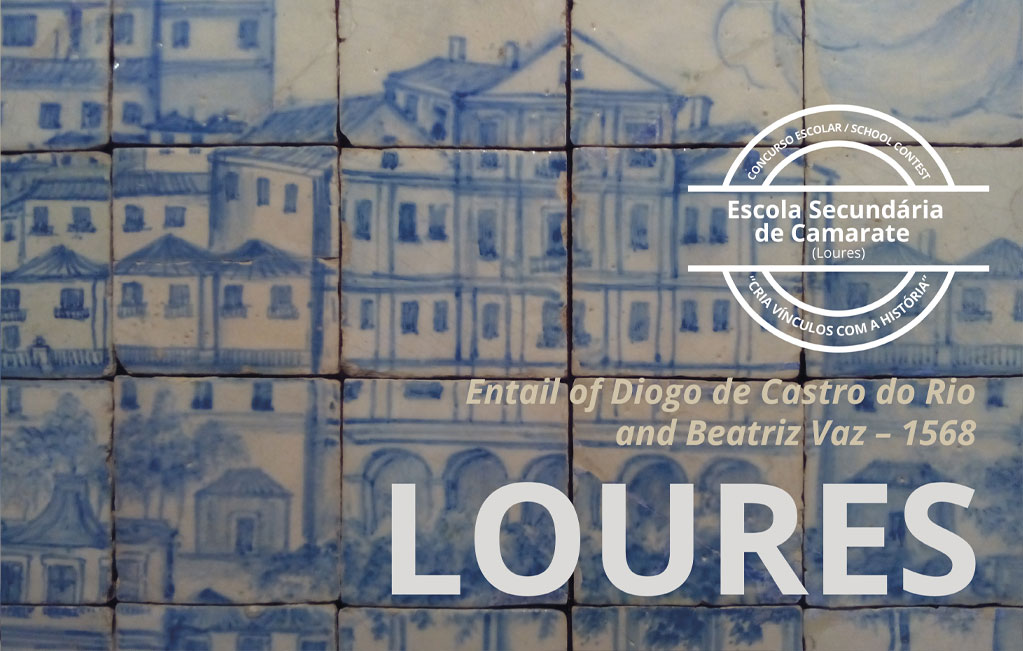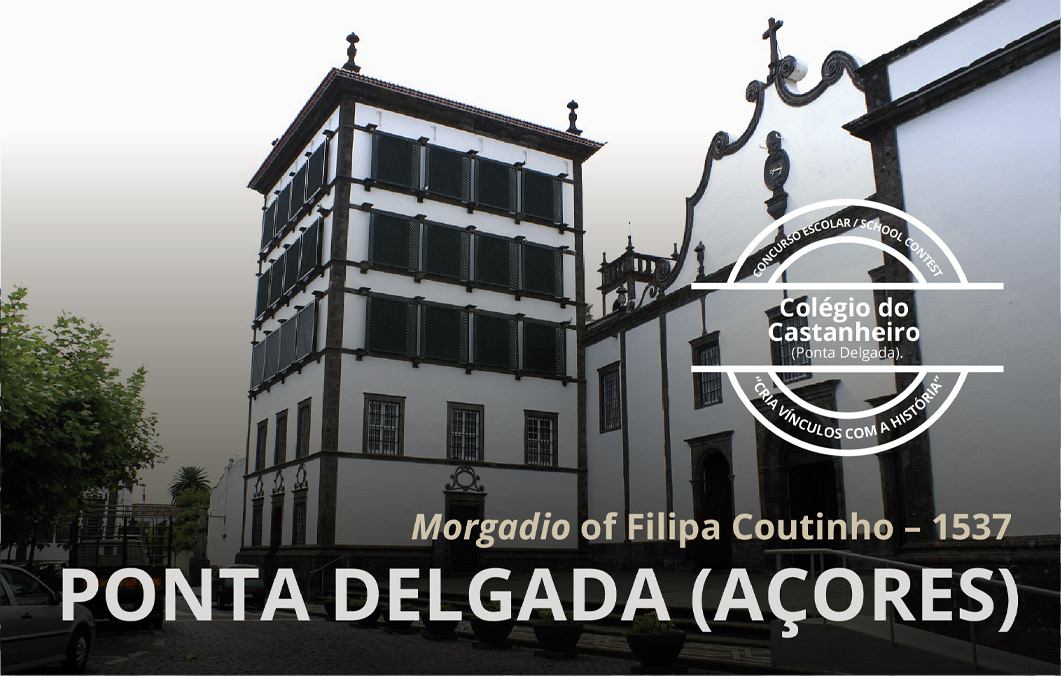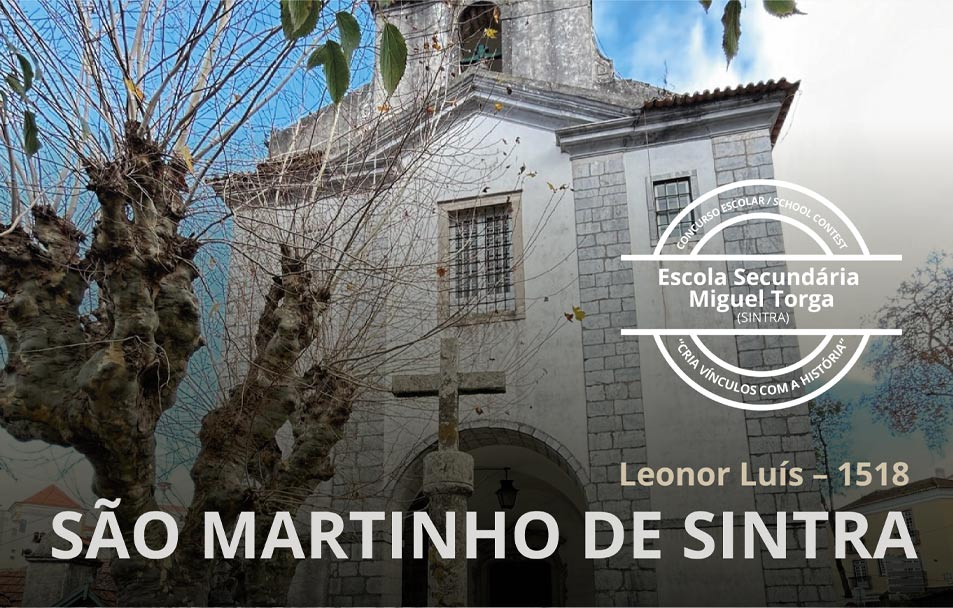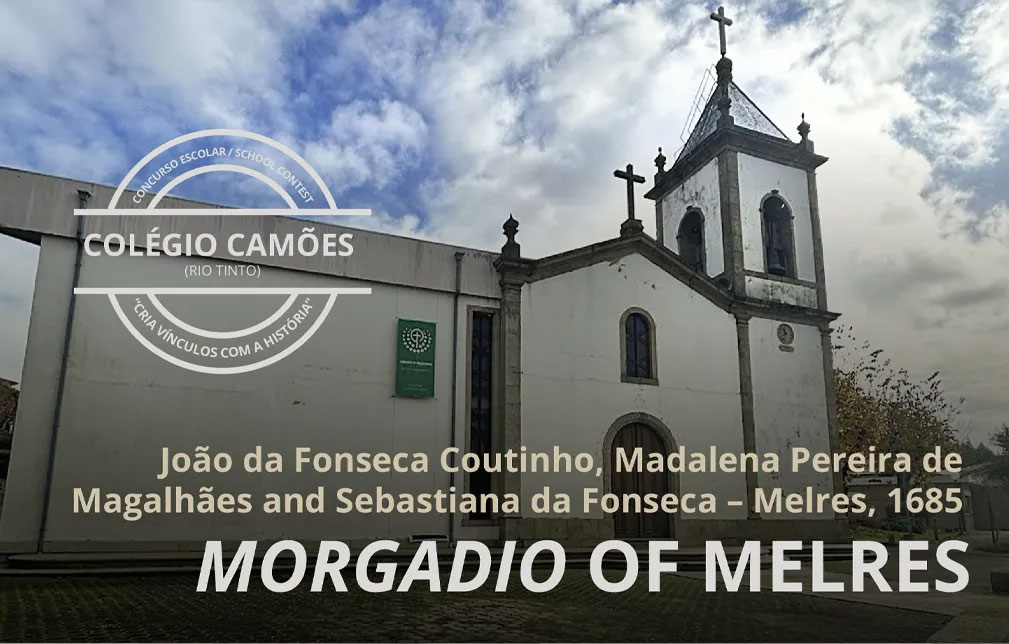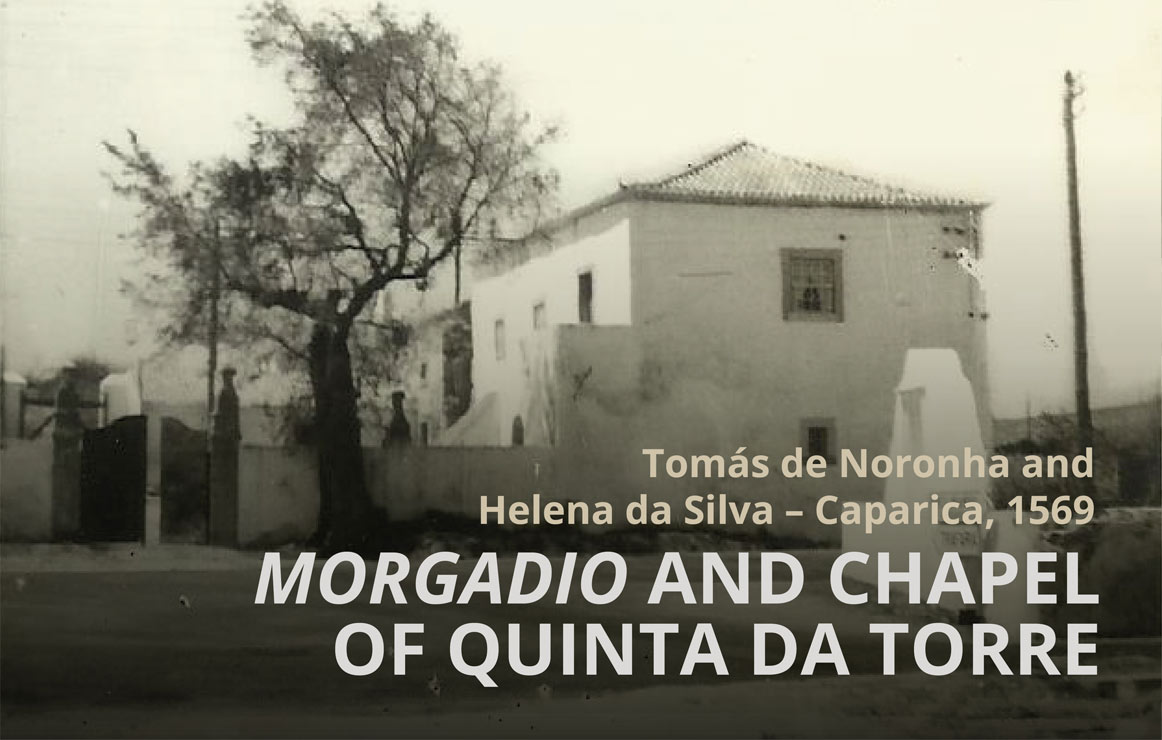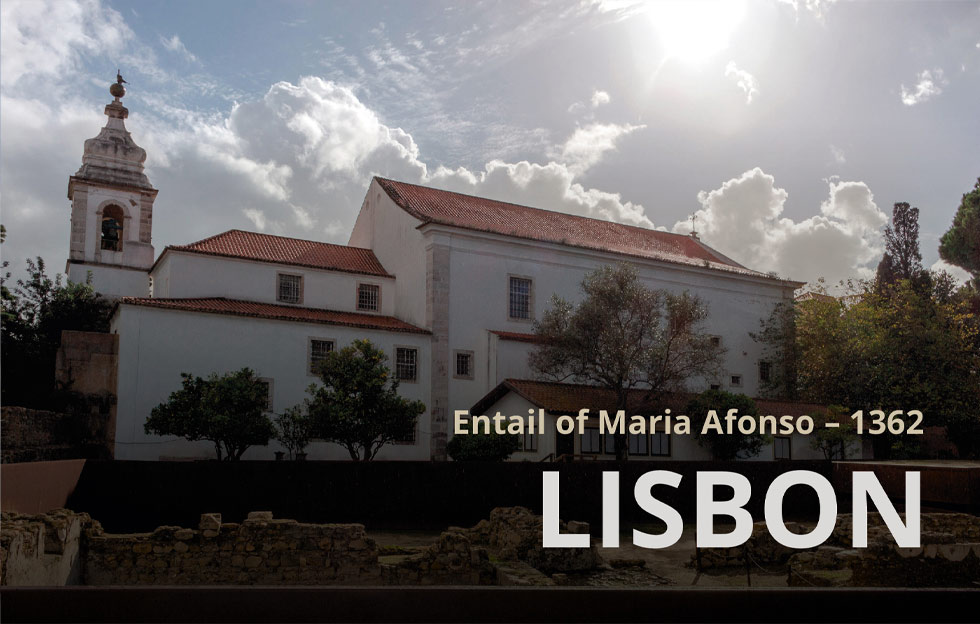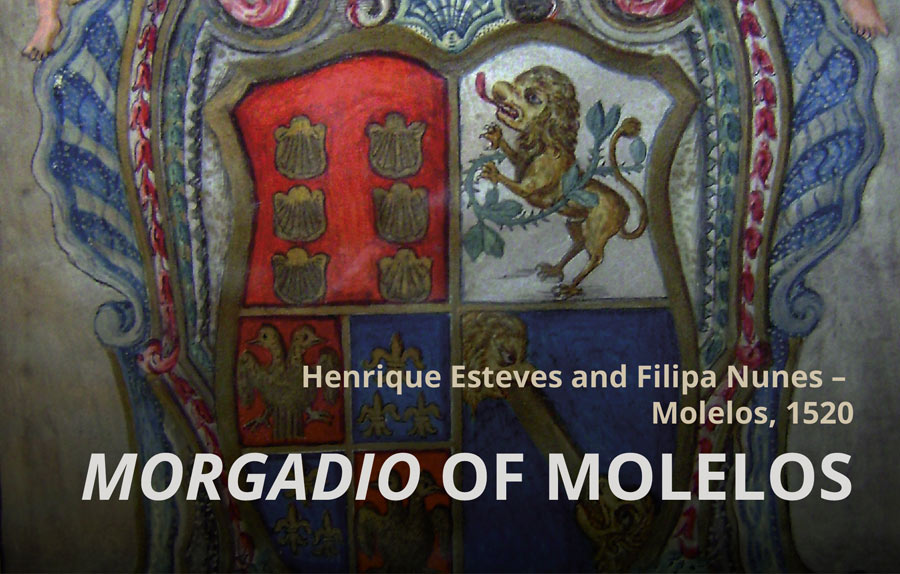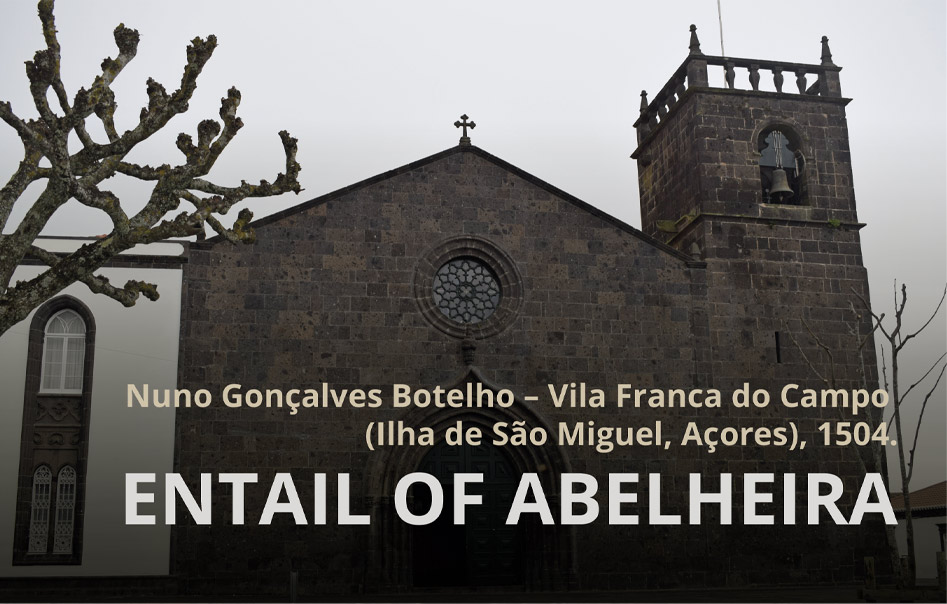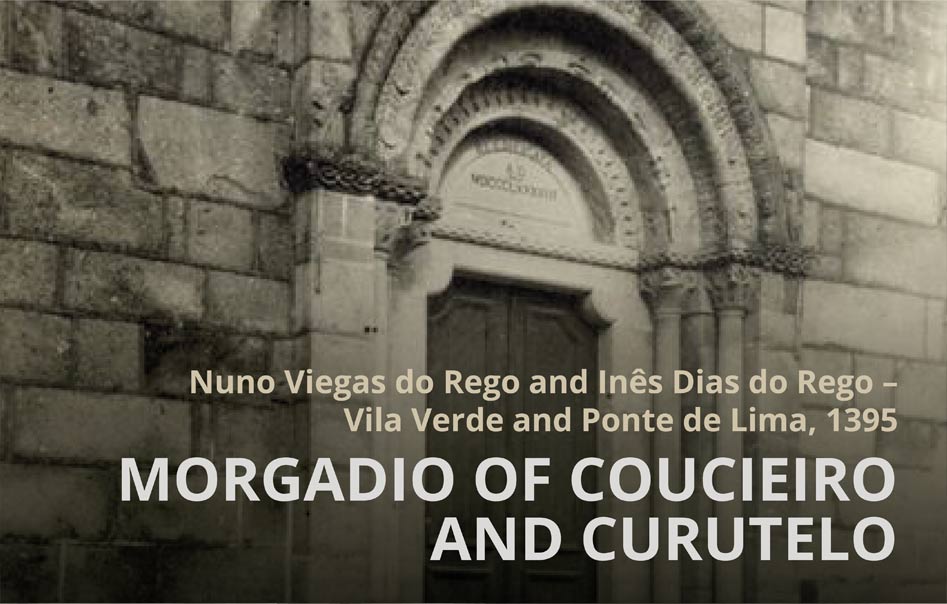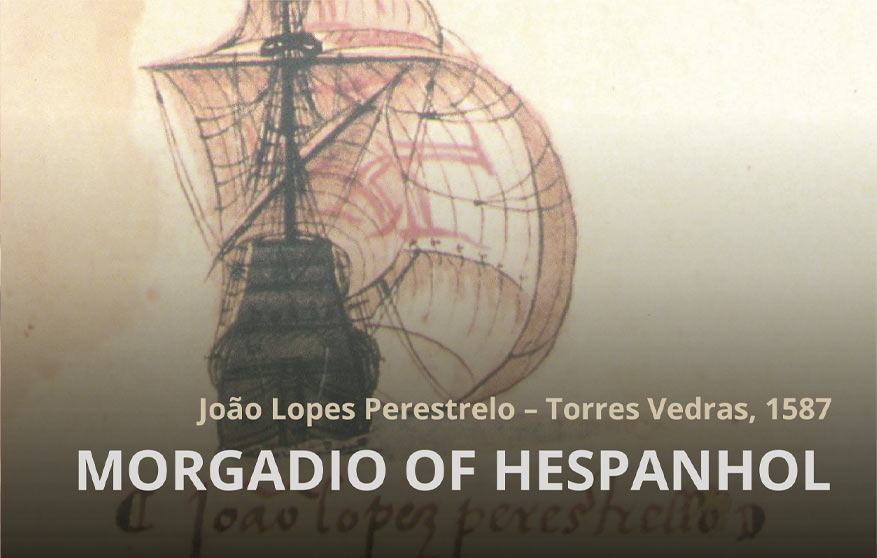Entail of the month (September, 2023)
Entail of Abelheira
Nuno Gonçalves Botelho, Vila Franca do Campo (São Miguel Island, Azores), 1504
Nuno Gonçalves, or Nuno Gonçalves Botelho, was the first man to be born on the island of São Miguel, in the Azores (RODRIGUES, 2008: 31). He was the son of Gonçalo Vaz Botelho, called the Great, “a branch of the Botelhos in the Azores, one of the oldest settlers on the island of São Miguel, where he came with his wife and some of their children”, around 1450 (FRUTUOSO, 1977: vol. 1, cap. 4, 53; FELGUEIRAS GAIO, 1938: 118). Gonçalo, son of Pero Botelho, commander of the Order of Christ, was one of the men from the House of Prince Henry the Navigator who was part of the group led by Gonçalo Velho Cabral, responsible for the settlement of the eastern part of the archipelago. He was called the Great because he was so “in body and condition” (FRUTUOSO, 1977: vol. I, 54). He was the first ombudsman of the captain of the island of São Miguel, having led the creation of the municipality of Vila Franca do Campo. To commemorate this fact, a statue of him by the sculptor Canto da Maia was placed in front of the town’s hall in 1954. This statue includes a bas-relief depicting his descendant Nuno Gonçalves Botelho de Arruda Coutinho e Gusmão (1813-1879), 1st viscount of Botelho (MENDES, 2018: 19).
Nuno Gonçalves Botelho’s date of birth is unspecified, and almost nothing is known about his life. It is known that he was a squire, married Catarina Rodrigues, to whom some genealogists add Coutinho, and lived in Rosto de Cão. He entailed land near Vila Franca do Campo, next to the Ribeira da Abelheira, in his will, dated October 13, 1504. The chapel of Nossa Senhora da Vida (Our Lady of Life) was built on these lands by his descendant, the captain-major of Vila Franca, nobleman of the Royal House, Francisco de Arruda Botelho, who was baptized in the parish church of Ponta Delgada in 1630 (RODRIGUES, 2008: 34).
Current façade of the Mother Church of São Miguel of Vila Franca do Campo, rebuilt after the great destruction of the city in 1522.
His son, Jorge Nunes Botelho, a noble knight, who had been in Tangier and Arzila in 1510 and 1511 and married Margarida Travassos Cabral, succeeded him in the morgadio established by Nuno Gonçalves Botelho (RODRIGUES, 2008: 32). He was granted the Botelho of Azores coat of arms in 1533 (the original royal charter remains in the family archive).
In the archive of the Botelho de Gusmão family, still in the possession of their descendants on the island of São Miguel, is the original public form of the will of Nuno Gonçalves Botelho, dated October 21, 1504. It consists of seven folios, to which an eighth has been added, with the indication “Testament of Nuno Gonçalves Botelho, the Elder, husband of Caterina Rodrigues”, mainly to protect the document after it has been folded into four, as was often the case at the time. It states that the widow “requested [the judge] to give her the copy of the said will in public form, so that she could see it all and have the will of the testator carried out” (AFBG, “Pública-forma do testamento…”, fls. 1v-2).
The public form is of great importance in this case, since the integrity of the original must have disappeared a long time ago. This fact is evident in the letter sent on October 4, 1867, by the Civil Governor of Ponta Delgada, Félix Borges Medeiros, at the request of Nuno Gonçalves Botelho’s descendant, the commander morgado Nuno Gonçalves Botelho de Arruda Coutinho e Gusmão (RODRIGUES, 2008: 36), the last administrator of the entail, requesting the registration of the morgadios he owned (ANTT, Morgados e Capelas, Vínculos, Ponta Delgada, n.º 23).
Statue of Gonçalo Vaz Botelho with bas-relief depicting Nuno Gonçalves Botelho de Arruda Coutinho e Gusmão (1813-1879), in front of Vila Franca do Campo town hall.
The document, bearing the same date, which accompanied the letter, had been drawn up in compliance with the provisions of the Letter of Law of July 30, 1860, which established the reform of entails. The acceptance of the public form in this formal administrative process proves the authenticity and veracity of this secular document.
In the section of the will referring to the institution, it is stated that Nuno Gonçalves Botelho, to discharge his conscience, takes from the third part of his inheritance (terça) the land that is in Vila Franca (AFBG, “Pública-forma do testamento…”, fl. 6). This land had about a moio and a half of wheat under sowing and bordered the Ribeira da Abelheira on one side and his brother’s, João Gonçalves Botelho, estate on the other. With the income from this land, in fatiota (i.e. in perpetual leasing), one mass a week was to be celebrated (RODRIGUES, 2008: 31; 75).
Public form of the will of Nuno Gonçalves Botelho.
This mass was to be said in the chapel of his deceased father, in the original church of São Miguel, in Vila Franca do Campo, where the testator wished to be buried. If the land produced more than could be spent on the mass, he orders that it be used for the said chapel and its ornaments. Unfortunately, the catastrophe that destroyed Vila Franca do Campo, then the capital of the Azores, with earthquakes and landslides on October 22, 1522, caused thousands of deaths and caused almost all its buildings to disappear. However, the chapel was rebuilt by Gonçalo Vaz Botelho’s grandson, André Gonçalves de Sampaio (MELO, 2011: 95; RODRIGUES, 2008: 74).
The mass was to be said for the soul of Nuno Gonçalves and his wife. Their son, Jorge Nunes Botelho, was entrusted with the administration of the mass, as well as receiving and applying the land’s rents, and from then on, by descending line.
Ancient altarpiece of São Miguel in the Mother Church.
Throughout the centuries, this entail, the oldest of the Botelhos family and that of their direct line, will accompany thirteen generations of the family’s morgados. The last administrator, who died in 1879, saw the reform of the entails and their subsequent extinction. However, these lands remained in the possession of direct descendants for another three generations, and were finally sold by Dona Maria Isabel Botelho de Gusmão, my mother. She was the daughter of Manuel Nuno Botelho de Gusmão, heir to the 1st Count of Botelho. The sale was made by deed dated August 14, 1943, to José Honorato Gago da Câmara de Medeiros (MELO, 2011: 94). The house was sold empty and the old and original eighteenth century coat-of-arms stone was removed, which is now in the possession of the descendants of Dona Maria Isabel Botelho de Gusmão, as well as the archive and other family possessions. After the sale, the appearance of the buildings and the property changed greatly (DUARTE, 2012: 133).
Isabel Maria Botelho de Gusmão Dias Sarreira Cid da Silva
Coordination: Maria de Lurdes Rosa and Rita Sampaio da Nóvoa
Sources and bibliography
ARQUIVO DA FAMÍLIA BOTELHO DE GUSMÃO (AFBG), “Pública-forma do testamento de Nuno Gonçalves Botelho”.
ARQUIVO NACIONAL TORRE DO TOMBO (ANTT), Morgados e Capelas, Vínculos, Ponta Delgada, n.º 23.
DUATE, S. A. – Pedras d’Armas e Armas Tumulares do Império Português, tomo 1. Açores. Ponta Delgada: Letras Lavadas Edições, 2012.
FELGUEIRAS GAIO – Nobiliário de Famílias de Portugal, tomo VII, Título Botelhos. Braga, 1938.
FRUTUOSO, G. – Livro Quarto das Saudades da Terra. Ponta Delgada: Instituto Cultural de Ponta Delgada, 1977.
MELO, P. – “O 3º Visconde do Botelho e a «(con)sagração» de uma identidade familiar in Insulana. Órgão do Instituto Cultural de Ponta Delgada. 67 (2011), pp. 91-104.
MENDES, A. O. – A descendência do 1º Visconde do Botelho Nuno Gonçalves Botelho de Arruda Coutinho e Gusmão (1813-1879). Ponta Delgada: Letras Lavadas Edições, 2018.
RODRIGUES, R. – Genealogias de São Miguel e Santa Maria. DisLivro Histórica, 2008.
Other entails of the month



